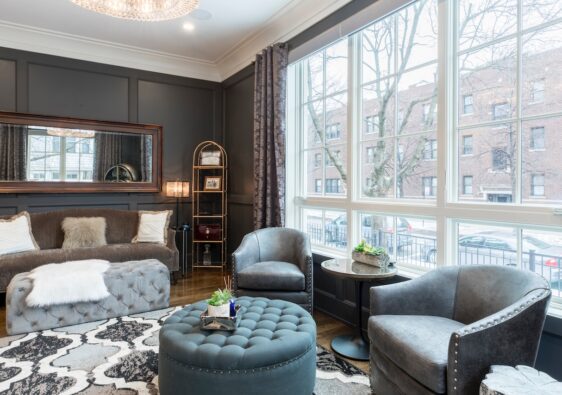As remote and hybrid work continue to redefine our professional lives, the home office has evolved into a space that must serve dual purposes: visual appeal and functional support. Australians, like many professionals globally, now understand that achieving peak productivity doesn’t mean compromising on design. A home office that looks good and supports your physical well-being is not only possible—it’s essential.
Where Comfort Meets Class: A New Office Design Ethos
The traditional office aesthetic—sterile whites, grey carpets, and stiff chairs—has given way to a more intentional, lifestyle-driven approach. Today’s home offices are curated to reflect personal style while embracing ergonomics. From soft textures and warm woods to biophilic elements and flexible lighting, the new office is a sanctuary for focus and wellness.
But design is only part of the story. Without functional support, even the most beautiful spaces can become health hazards. Back strain, neck tension, and poor posture can quietly sabotage your workday. That’s where ergonomic innovation steps in.
Prioritising Posture with the Right Seating
A stylish home office starts with the chair—it’s the anchor of your entire setup. The perfect chair should not only complement your room’s decor but also support your spine, shoulders, and hips throughout extended periods of work.
Modern ergonomic task chairs do exactly that. With adjustable lumbar support, breathable materials, and sleek silhouettes, these chairs merge form with function. They’re a far cry from clunky executive seats of the past, fitting seamlessly into even the most design-forward home offices.
Standing Stylishly: Embracing Movement in Your Day
Design-conscious professionals are increasingly adopting sit-stand desks for their versatility and health benefits. These desks empower users to shift between seated and standing positions throughout the day, combating the dangers of a sedentary lifestyle.
But the benefits go beyond physiology. Sit-stand desks with streamlined profiles and sustainable materials elevate the overall aesthetic of a space. Paired with a minimalist chair or natural timber accents, they create a clean, modern look that promotes clarity and mental focus.
Comfort Beneath Your Feet
The floor is often overlooked in home office design, yet it plays a vital role in ergonomic support. Standing for extended periods can strain your lower limbs, particularly on hard flooring. That’s why professionals are turning to anti-fatigue mats.
Anti-fatigue mats are engineered to reduce pressure on joints, encouraging subtle micro-movements that improve circulation. Better yet, modern versions come in sophisticated finishes—think charcoal greys, soft neutrals, and beveled edges—that add polish without clashing with your room’s style.
Harmony Through Minimalism
Minimalist design isn’t just a trend—it’s a productivity strategy. Cluttered desks and mismatched accessories can increase stress and sap focus. To counter this, integrate ergonomic storage solutions, under-desk cable management, and multi-functional furniture that keeps surfaces clean and visually balanced.
The beauty of a minimalist ergonomic space is that it enhances both physical and mental clarity. When your environment supports your needs without visual noise, creativity and efficiency can flourish.
Lighting the Way to Better Work
Good lighting is fundamental to both ergonomics and interior design. Natural light should be your first choice, but where it’s lacking, invest in adjustable LED task lighting that reduces glare and eye strain. Lighting that mimics daylight enhances alertness while contributing to a warm, inviting ambience.
Avoid overhead lighting that casts harsh shadows, and opt for fixtures with dimmer controls or colour temperature settings. The right light not only prevents fatigue but elevates the overall look and feel of your space.
Biophilic Design: Where Nature Meets Wellness
Biophilic design—the integration of natural elements into built environments—has been shown to reduce stress and increase productivity. Add indoor plants, timber textures, and nature-inspired colour palettes to ground your space and reconnect with the outside world.
Natural design elements not only beautify your home office but also support psychological well-being. A single plant or timber desk can bring a sense of calm and balance that enhances long-term focus.
Tailoring the Space to You
The most effective ergonomic home offices are customised. No two people work the same way, and your setup should adapt to your preferences. Adjustable desks, modifiable seating, repositionable monitors, and personal touches like art or textiles help create a space that inspires and supports.
A custom approach also allows for better posture correction, reduced injury risk, and higher day-to-day satisfaction. Tailored doesn’t mean expensive—it means intentional.
Making It Work for the Long Haul
Creating a home office that’s both stylish and ergonomic isn’t a one-time effort. It requires regular review and refinement. As your work habits change or your needs evolve, be open to adjusting layouts, upgrading furniture, or exploring new tools that can improve your daily experience.
The investment pays dividends. Whether you’re leading a business, supporting government contracts, or managing educational programs from home, your workspace can directly influence your performance, health, and outlook.
Conclusion
A beautiful space shouldn’t come at the cost of your health—and vice versa. The secret to a truly effective home office is striking a balance between aesthetics and ergonomics. By thoughtfully integrating stylish furnishings, supportive tools, and custom design choices, professionals across Australia can enjoy workspaces that inspire creativity, sustain wellbeing, and reflect who they are.
With the right selection of supportive furniture and design-conscious tools, creating the perfect ergonomic sanctuary at home has never been easier.



